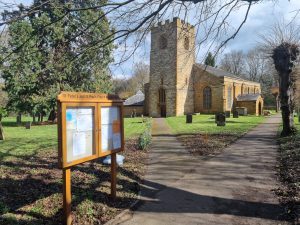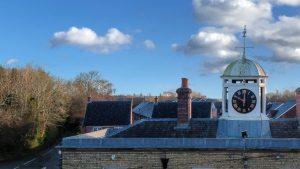Explore the Fascinating History of Weedon
If you’re a long-term resident of Weedon or perhaps considering moving to this charming village, discovering its rich history and landmarks can provide you with a sense of belonging and pride. Your home and its locality play a vital role in shaping your identity, and the following article will delve into some of the historical roots of Weedon to hopefully deepen your appreciation for this great little village.
Situated at the Crossroads of Road and River
Originally known as Weedon-Bec, Weedon is a historic village positioned near the Roman Watling Street and the picturesque river Nene. The Church of St. Peter and St. Paul, standing gracefully between the grand union canal and railway line, was reconstructed in the early 19th century. Despite the renovation, it proudly retains its remarkable embattled tower from the 12th century, making it a prominent local landmark.
The Church of St. Peter & St. Paul
The Hill with a Sacred Past
However, the history of the church predates even this era. About 1300 years ago, King Wulfere of Mercia built an earlier church on the same site. His daughter, St. Werburgh, established a nunnery near the banks of the river Nene, using a former palace as its foundation. The name Weedon, meaning ‘hill with a sacred place,’ originates from this historical palace.
The Miracle of Weedon: St. Werburgh’s Legacy
Legend has it that St. Werburgh performed numerous miracles, one of which involved banishing a flock of geese from Weedon village to prevent them from damaging crops and causing famine. To this day, no geese can be found in Weedon, and a church window and a weather-goose atop the church tower commemorate this miracle. The image of departing geese also serves as the logo of Weedon-Bec primary school.
Alice Old and the Six Sovereigns
Among Weedon’s most famous residents is Alice Old, who lived up to her name by being one of the village’s longest-lived inhabitants. Alice witnessed the reigns of six sovereigns and experienced many significant historical events. Born during the time of Queen Elizabeth and passing away during the rule of William and Mary, Alice likely heard the commotion of the gunpowder plot and may have even caught a glimpse of the perpetrators as they sought refuge towards Ashby St Ledgers. Accounts of the Great Plague devastating London would have reached Alice’s doorstep, and she probably witnessed the Great Fire of Northampton, with the glow visible atop Weedon hill.
Retreat to the Heart of England
A notable structure in Weedon is the Royal Ordnance Depot, constructed in 1802. Its location was chosen due to Weedon’s well-established canal system and turnpike, facilitating the transportation of personnel, materials, and armoury. Additionally, Weedon’s central location in the Heart of England made it an ideal retreat for King George III and his family in case of a Napoleonic French invasion. Much of the depot still stands today, offering a unique space featuring artisan workshops, offices, studios, antique stores, and bookshops.
Weedon is a village steeped in captivating history, boasting fascinating stories and landmarks that are certain to captivate anyone who visits.

We hope you found our short article on Weedon interesting. At David Cosby Chartered Surveyors and Estate Agents, our sales and lettings team possess extensive local knowledge, along with legal and surveying expertise, ensuring that you receive the highest standard of service and the best professional advice. Whether you are looking to rent, let, buy, sell a property, or simply have a property-related question, please click the link below or call us on 01327 361664.




